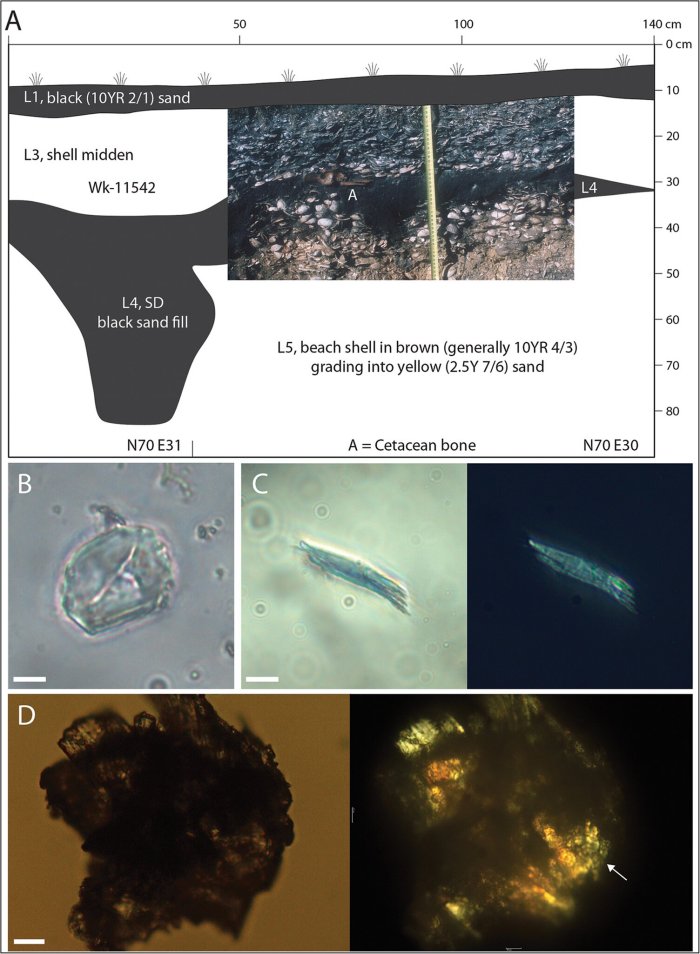Conny Waters – AncientPages.com – The University of Otago (Maori: Otakou Whakaihu Waka) researchers have identified an unexpected location for one of the earliest securely dated sites of kūmara cultivation in Polynesia.
Sweet potatoes. Image credit: – CC BY-SA 3.0
This discovery provides significant insights into the agricultural practices and historical timelines of the region.
The study published in Antiquity found microscopic kūmara starch granules, Asia-Pacific taro, and Pacific yam (uwhi) at Triangle Flat in Golden Bay (Mohua) cultivated as early as AD 1290–1385.
These early dates align with the initial period of settlement in Aotearoa New Zealand and offer the first pre-1400 evidence of kūmara cultivation in Te Waipounamu, marking it as one of the earliest instances in Polynesia.
Additionally, they document the southernmost attempt to grow uwhi globally. The site is located on a conservation estate that falls under the customary jurisdiction of Manawhenua ki Mohua.
According to lead author Professor Ian Barber from Otago’s Archaeology Program, the site provides evidence of the longest duration of māra (garden) conservation from a single location in Polynesia.
Professor Ian Barber noted that the earliest māra pits containing kūmara-like starch at Triangle Flat date back to the early fourteenth century, coinciding with Polynesians’ initial settlement of the motu.
Despite its significant role in Polynesian life, both historically and in contemporary times, the precise timing and circumstances surrounding the initial dissemination of the sweet potato across Oceania remain largely obscure.
Some botanists suggest that the sweet potato naturally drifted into Polynesia thousands of years ago. However, many anthropologists argue for undated human mediation, particularly because the Māori name kūmara is a variation of pre-Columbian American sweet potato names.
At the same time, Professor Barber asserts that, in light of these uncertainties and intriguing possibilities, scholars have engaged in extensive debate regarding the precise timing and even the significance of the sweet potato’s role in early Polynesian colonization.
It was previously assumed that the first settlers primarily foraged for flightless moa, other birds, and marine animals. Kūmara became important later, especially in warmer areas of central to northern Aotearoa New Zealand where pā earthworks proliferated.
“The Otago research now challenges standard archaeological assumptions that the first Polynesian settlers of Aotearoa, and Te Waipounamu especially, abandoned tropical horticulture largely if not entirely.
“The new Triangle Flat evidence points to the early adaptation of tropical crops, especially kumara, from the outset of Polynesian settlement, even in unlikely places.
“In short, kumara was not a colonization after-thought in Aotearoa.”
Early chronology supports Māori traditions that kūmara was established in Hawaiki, the central Polynesian homeland, when the first voyagers traveled south to Aotearoa.
Co-author Rebecca Waikuini Benham (Ngāti Kahungunu ki Wairarapa, Ngāti Porou, Ngāti Awa) of Heritage New Zealand Pouhere Taonga was responsible for the preparation of the microscopic starch granule samples. She said that Aotearoa offers a unique case study when compared to the other Polynesian Islands.
Deep, proposed taro planting pit with surface depression in L4 context. Credit: Photographs by Ian Barber & Rebecca Benham; figure by Les O’Neill. From Antiquity (2024). DOI: 10.15184/aqy.2024.143
“There are significantly fewer starch producing crops that were cultivated here than compared to the more tropical islands, she said adding that “the identification of granules, along with the possible raphides, may be able to be applied to other early sites across the motu to investigate the cultivation of taro and uwhi alongside kūmara from an archaeological perspective, of course in collaboration with local kōrero.”.
This important microbotanical science has been used to identify ancient crops throughout Polynesia, including Aotearoa, that may leave no other traces.
The study also demonstrates that the first Aotearoa gardeners developed sophisticated planting pit and shell mulch technologies in local environments and soils, which helped secure kūmara horticulture in a marginal climate.
Currently, sweet potato is the world’s fifth most important edible crop but is under threat from climate and other environmental changes in many parts of the world, Professor Barber says.
“New knowledge from the past as well as the present may yet support food security science targeting sweet potato production.
“Archaeological knowledge of these ancient technologies might yet inform modern efforts to improve natural hardiness and nutrition in sweet potato.”
Paper
Ian G. Barber et al, American sweet potato and Asia-Pacific crop experimentation during early colonisation of temperate-climate Aotearoa/New Zealand, Antiquity (2024). DOI: 10.15184/aqy.2024.143
Written by Conny Waters – AncientPages.com Staff Writer








